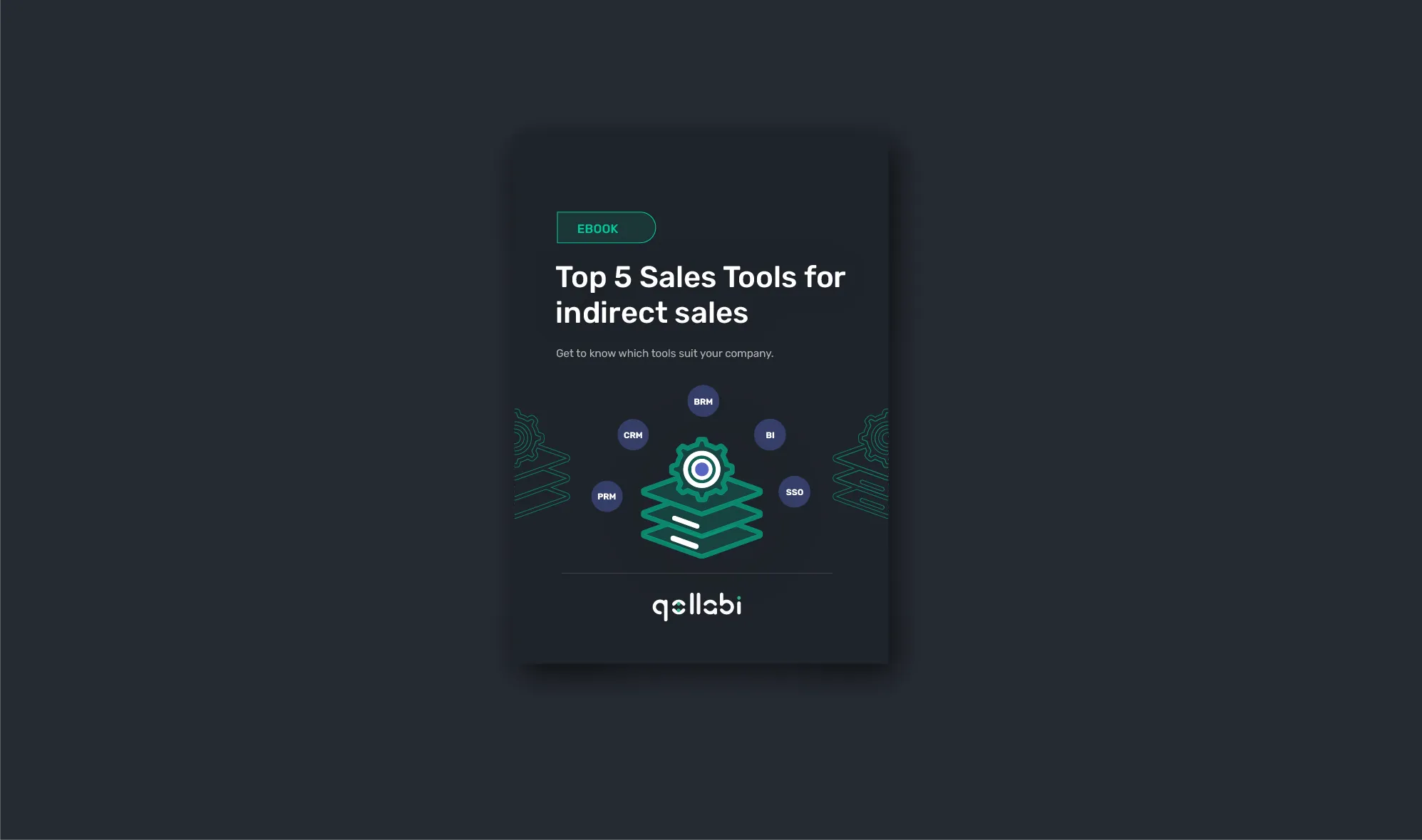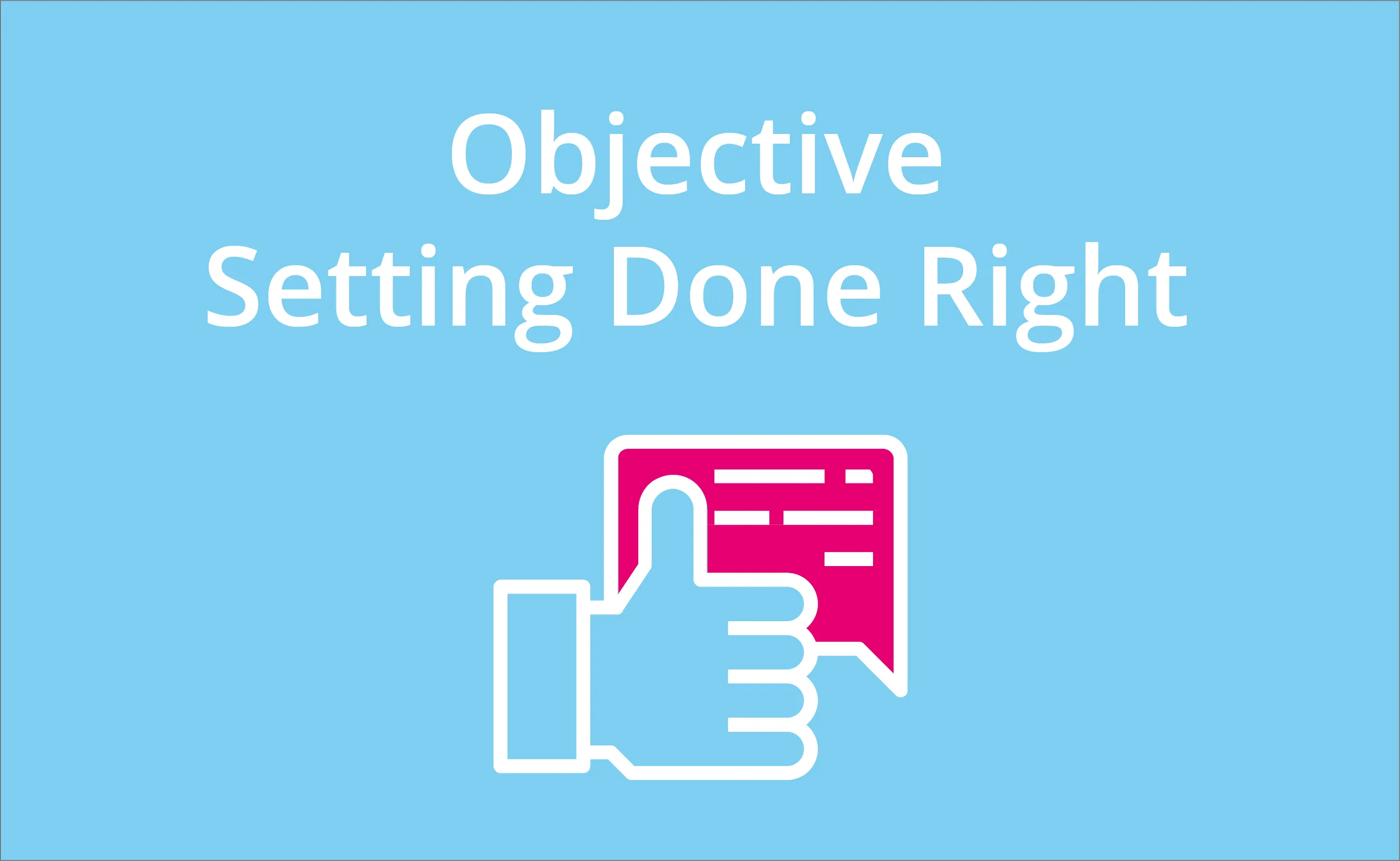
Top 5 of the best tools to use for indirect sales in 2023
This blog will help you navigate through a strong growth category of channel sales technology in 2023.
As the CEO of one of the top BRM tools out there (Qollabi BRM), I believe it’s my duty to help companies navigate through the different acronyms and technological solutions available. And, more importantly, how they interconnect and interact with each other. I attempt to make a high-level decision tree based on the main building blocks in your technology stack rather than providing a list of tools to review and compare.
Main Building Blocks of your channel technology stack

- CRM (Customer Relationship Management)
- PRM (Partner Relationship Management)
- BRM (Business Relationship Management)
- BI (Business Intelligence)
- SSO (Single Sign-on)
Different industries, different terminology
75% of all world trade happens indirectly according to Forrester. With the different terminologies and different types of indirect sales partners, it can be really hard to understand whether technology for indirect sales is helpful for you or not.It also depends if you are managing a few partners or a couple of thousands.
According to the industry you’re in, the type of business partner relationships you establish will differ and therefore also the tools you need. For example, in the IT industry, partnerships are mostly defined as resellers, distributors, affinity partners, channel partners, referral partners, strategic alliances, etc.These partnerships exist for decades and companies have been using different channel tools for years. This also means that some of the technology they’re using is old fashioned.

In other industries like financial services, partnerships are defined in a different way.First, we have the traditional alliances in the form of brokers, branches, agents, etc.
For decades this channel has been stable. Financial service providers didn’t see the need to acquire technology to enable these strong alliances. However, think about the online direct distribution of insurance products or the arrival of new fintech players. These trends are obliging the financial services industry to rethink its distribution strategy, channel operations and technology used in managing their indirect sales partners.

Managing Partner Ecosystems is the future. Make it part of your strategy in 2023!
No matter what industry you’re in, you may have heard the words ecosystem management popping up in the last two years. Is it a buzz word or will strategic alliances become a standard driver in any business strategy for the coming decade?
What is certain is that companies in all industries are transforming into tech companies. If you’re a traditional manufacturer you will probably make use of technologies like RFID (Radio-frequency identification) or adding another type of technology layer in your product. If you’re a financial services company you will need to rethink your (digital) customer journey and look for new partnerships for distributing your products and services.
The bottom line is: All companies will benefit from forming new strategic alliances and revisit the way they collaborate with their existing channel partners or indirect sales partners. Traditional manufacturing using technology
According to Forrester, the channel technology stack is growing fast. One of the thought leaders in this domain that I highly recommend following is Jay Mc Bain (Principal Analyst, Channel Partnerships & Alliances).
He states: “The channel technology stack is a group of technologies that firms leverage to plan with, find, recruit, onboard, develop, enable, inceltivize, co-sell with, co-market with, manage, measure, and report on partners. Delivering automation of indirect sales processes, workflows, and partner programs, channel software is becoming increasingly critical to a brand’s ability to win, serve, and retain its customers and partners. It’s a fast-growing market, with 59% of companies increasing spending across the stack.”A summary made by Apideck can be found here or find the full blog on Foster.com.


Become partner-centric and understand the advantages of indirect selling
Establishing strategic alliances and becoming partner-centric can have a tremendous impact on your top line business’ growth. After talking to various channel experts in different industries, I’ve come up with the following potential benefits. It’s important to have an understanding of how indirect selling would benefit your business and to consider channel sales vs direct sales.
You are tapping into an existing customer base. It takes a lot of time and effort to build trust with your end clients. Trust can vanish in a flash. When you work with indirect sales partners, however, you can build on the relationships your strategic alliances already have with their customers. Indirect sales are cost-efficient.
An ecosystem of channel partners can often rely on their own sales and marketing teams and networks. They will probably have all the necessary procedures in place to deliver results in the most efficient way.
Indirect sales increase speed to market If you don’t have your own sales force or if you enter a new region or market where your brand doesn’t have a strong presence yet, indirect sales channels allow you to enter new markets quickly and easily, often at low initial risk and cost. Established logistics allow you to streamline, scale and focus.
More often than not, resellers already have a certain level of logistical infrastructure that you don’t need to worry about anymore. This offers incredible opportunities to streamline and scale your operations fast and easily. More on the advantages of indirect sales and indirect selling.
Understand the different roles in indirect sales
Before diving into the different building blocks of your channel operations technology stack, it is crucial to understand the internal ecosystem that is involved in managing partners. Different roles require different processes, require different tools.
Channel Partner Manager, Channel Account Manager or Strategic Alliance Manager
The most obvious role is one of channel account managers. According to the industry, this role can take many variants. However, the main role comes down to find, onboard, enable, develop and grow partnerships.

Ask yourself the following questions before you acquire a tool?
- Onboarding: do you plan to acquire a lot of new partners and is the onboarding process cumbersome?
- Enablement: do your partners require a lot of marketing material to assist them in the sales process with the end customer? If the answer is yes to both of these questions, consider acquiring PRM (Partner Relationship Management) technology (see below).
- Develop and grow: do you expect your partners to provide long term and increasing turn-over for you? If the answer is yes to this question, consider acquiring BRM (Business Relationship Management) technology (see below).
Channel Marketeer and Sales Support Partner
Channel marketeers will assist channel account managers to identify the right campaigns and marketing collateral to distribute to the indirect sales channel. This can be product related collateral or predefined email templates that channel partners can send to their end customers.
Sales support teams will assist the sales and marketing team mostly on the administrative side and partner support. If these processes sound familiar to you, you will see that this is the core business of PRM solutions (see below).
Sales Management, Channel Leadership, VP of sales, C-level

Channel sales or indirect sales is often considered as a black box. We could consider it as an iceberg where management expects to see results from channel account managers who expect to see results from their ecosystem of business partners.
When you feel the pain upon looking at this iceberg metaphor, it’s time to consider acquiring a BRM (Business Relationship Management) software. BRM will allow you to bridge the world of indirect sales objective setting and CRM (Customer Relationship Management) data with joint business planning, partner collaboration and follow-up.

Tool 1: choose your CRM (Customer Relationship Management) wisely
Now CRM (Customer Relationship Management) is a vast category. Since the arrival of Salesforce almost 20 years ago, this category has been growing in a spectacular way. Contrary to what a lot of sales professionals might think or expect, not all companies have already acquired CRM. Some companies use their ERP (Enterprise Resource Planning) tool for customer data and others just use Excel. On the other hand, large corporations went through heavy implementation trajectories in the last years moving legacy data systems to a new cloud solution. Often, these tools were sold as being the holy grail, providing a solution for all a companies’ needs, automation gaps and inefficiencies in internal collaboration. Sales teams were told CRM would make their lives easier and they would sell more.The reality appeared far from true. Whereas CRM did solve critical issues, sales teams often consider CRM as an administrative tool they need to use from management.
CRMs are not the holy grail but are an essential starting point
What CRMs are good at, is centralizing end-customer data. Big or small, every company should adopt a CRM system as one of its first tools for sales and marketing.I would consider the following critical processes that should be captured in a CRM system:
- Contact data: make sure you store all the contact details of the relevant people. This could be end customers, sales partners, prospects, investors etc.
- Company data: obviously, companies are different from contacts. Contacts can move to another company, companies have different departments and are mostly steady entities.
- Leads: lead management has become one of the most critical parts in any business. Interested prospects can show interest in different channels, on your website, on an event, at your sales partner, on social media, etc. Capturing these flows and guaranteeing a solid system of lead qualification and lead passing is key for top-line business growth.
- Opportunities: with the arrival of CRM, sales shifted from being art to a science. Understanding the dynamics in the different phases of a sales funnel, the sub-steps, the lead times per step, and the conversion ratios are essential for any business willing to increase turn-over.
- Offers and invoicing: once we arrive at the end of the funnel, a more administrative process takes over, making an offer, modifying an offer, sending an offer, following up and finally closing a deal and sending an invoice. Helping sales and support teams with automated reminders, digital signatures, etc will take a lot of hassle out of the process and will increase chances to get the final signature.
So as we can see, CRMs are covering all of the processes, making us wonder if we can all cover these processes in one tool. And that’s exactly the challenge of a lot of CRM systems. Some of them are only capturing a couple of the processes or are only good at some of them. That’s why I would recommend choosing your CRM wisely and taking into account the size of your company.Recommended tools for Enterprise Companies and Corporations.
- Salesforce.com
- Microsoft Dynamic
These are the two biggest cloud-based players out there. They have the most advanced features and are used to work with large enterprises. They are able to cover all of the above-mentioned domains.
Adopt a digital strategy of best of breed
The downside of these tools can be complex and UX (User Experience). All credits to the well-trained sales squads of these large and famous software vendors who are able to sell their products as the holy grail to C-level promising to cover all business needs. However, more and more large companies start to understand that one size fits all is a myth. The different critical business processes require different tools and UX. In the same way, you don’t use presentation tools like Powerpoint to write documents (cfr. Word), you don’t use CRM for managing your business plans (cfr. BRM).

A digital strategy of best of breed becomes the standard at the most innovative companies in the world. They choose technology based on a couple of principles
- API first
- SSO (single sign-on), see below
- Map the customer journey
- Map the partner journey
- Business-driven selection procedures
- Connect and sync data between best of breed technologies

Tool 2: choose a modern PRM (Partner Relationship Management)
PRM has its origins in the IT Industry
If you’re working in the IT industry you’ve probably heard of a Partner Relationship Management tool or PRM. For decades this industry has been selling software via partners and resellers. In the early days, software was still packaged on floppy disks or CD-ROMs. Distributors and resellers were considered as box movers. However, more and more, these intermediaries started to play a more strategic role, some of them became the trusted advisor for their clients offering all kinds of services. Thomasz Tunguz from Redpoint divides three types of partnership as a good starting point:The “VAR”The value-added reseller sells, builds, services and operates a solution to a customer.
The “Application Developer”In contrast to the reseller model, the application developer model has one major difference. The vendor bills the customer directly and supports the customer. The “Broker" The channel partner’s value lies in bundling or packaging a stack of different solutions for a particular customer segment, and potentially some basic account management. More: https://tomtunguz.com/3-type-of-channel-strategies/
PRM automates the marketing process
Where BRM (Business Relationship Management) plays an aggregating role in managing the entire business relationship with your partners, PRM provides mainly solutions on a more operational level. Depending on the type of PRM, you will find the following categories covered:
- Training & Onboarding: facilitating the process of onboarding new partners.
- Enablement: in case your partners require a lot of marketing material to assist them in the sales process with the end customer.
- Lead passing: a critical operational process in partner enablement is managing leads to making sure leads are qualified and get followed up in a structured way
- Opportunity Management: once leads turn into opportunities, manage offers and define the right next steps
- Recruitment: finding new partners.
- Cobranding: help your partners to reach out to prospects and existing customers with cobranded emails and material.
- Marketing Development Funds (MDF): some companies decide to invest in their partnership by co-fund events and other initiatives.
Examples
- Workspan
- Zinfi
- Allbound
- Mindmatrix

Tool 3: acquire a BRM (Business Relationship Management) to create accountability and commitment
BRM data makes the invisible visible and connects to CRM data.
BRM (Business Relationship Management) is an entirely new category. Although not necessary, most companies that acquire a BRM tool, have some kind of CRM in place, or have centralized data by means of spreadsheets. The function of BRM software can best be explained with the metaphor below. Where CRM data is focused on the ‘results’ of your activities, you can call these data lag measures. BRM data, on the other hand, is built to make your leading measures visible, your objectives and key results (OKR).

Make your partner plan and business plan work
Most commercial organizations make business plans and action plans each year. In the context of indirect selling, these plans are often called partner plans, partner business plans or partner development plans. The way this usually happens is that senior management asks commercial teams (eg. channel account managers) to set up a plan to achieve a certain goal. Senior management then asks the teams to present to management their next year’s business plan, including a spreadsheet listing a set of selected focus business partners with a target to realize and a presentation with a game plan with high-level initiatives.
Management experiences this planning process as essential providing them a sense of control. From the side of the commercial teams, the business planning process is often considered as a cumbersome and theoretical exercise.
Successful business planning is not a theoretical exercise
So from the start, there’s senior management, channel management and business partners experiencing the business planning process in a very different way. It basically comes down to the following mindset.
Senior management: “next year needs to be different, we should know exactly what we’re going to do, at least per quarter. That’s why we need partner business plans”Commercial teams: “management is just dreaming, they don’t know the reality in the field, Everything changes so quickly and I’m the only one who really knows how things are going. I will figure out along the way how to achieve our objectives. That’s why I don’t really need business partner planning”.
Business Partners: “most of the account managers I know are mainly helping me with administrative commercial tasks, I rarely consider them as true strategic business partners that are helping me to develop my business with a long term vision. I could use some long term business planning in this changing environment.”

Of course, business planning is more than a theoretical exercise. It’s one of the most essential processes in a commercial organization to generate new forms of growth, preventing churn and beat the competition. BRM (Business Relationship Management) software has been developed to make the process of partner business planning smooth and useful for all parties. The mission of a great BRM system is to establish a process of joint business planning between senior management, commercial teams and business partners.

Business plans and partner plans just don’t work with spreadsheets, templates and presentations
So channel account managers might consider the partner business planning process as theoretical and cumbersome. On the other side, senior sales management asks for more anticipation. One of the main reasons for this is technology, or better the lack of technology:
- The problem with spreadsheets: spreadsheets are great to make one-time static calculations, but they’re terrible when you want to update them, aggregate different versions between different users and connecting to other data sources. So, when channel account managers make you a list of business partners, set an objective next to it. Nice! Sales management will be happy but channel account managers will probably not use it because of the inflexibility and bad UX to update.
- The problem with presentations: again, sales management will be happy listening to all the account managers and thinking they will execute exactly what is shown on each slide. The truth is that the initiatives presented are often way to high level, not measurable and not discussed with the business partners.
A BRM tool creates accountability and commitment between sales management-channel account managers and business partners.
For any company that is dealing with a process of business planning we recommend to consider to acquire a Business Relationship Management (BRM) tool that has the following building blocks:
- PLAN: allowing you to centralize business partner plans and making them dynamically based on a shared toolbox within a commercial team.
- COLLABORATE: the possibility to make a strategic profile of your business partner. Engaging with a business partner in a process of joint business planning. Updates on action plan with a structure based on Objectives & Key Results (OKR), sending requests, polls, etc
- MEASURE: API first platform, connecting with CRM and other data sources to enrich and update partner plans in real-time.Recommended tools for Enterprise Companies and Corporations.
- Qollabi.com
- Succesfulchannels (mainly templates)

Tool 4: acquire a BI (Business Intelligence Tool) to turn your data into visual attractive dashboards
Today, the most innovative companies make smart use of their data to optimize their business processes. In order to do so, Business Intelligence Tools have become a useful instrument in any domain of business: marketing, finance, HR, product development, and… you guessed it: sales.Business Intelligence tools help you translate raw business data into visual dashboards and easy-to-read visualizations. They help you visually present and interpret the data in an easier way, in order to make better decisions much faster.As a sales manager, BI tools are useful to get an up-to-date overview of your sales & partner revenue. But there are much more creative ways you can use dashboards as a sales manager. Let’s have a look at 3 different use cases on how to use dashboards to oil your sales organization.
Use dashboards to monitor sales trends
A sales trends dashboard gives you a solid overview of your complete sales cycle. Monitor your average sales cycle to understand how it impacts the pipeline, or monitor which products generate the most revenue. This all helps to make well-informed decisions within your sales organization.

Use dashboards to boost healthy internal competition
Many successful organizations use dashboards to track the performance of each segment, region or team. Of course, the idea is not to micromanage, actually, it’s the opposite. By boosting a healthy level of competition, your sales team will stay creative and motivated to come up with new ideas to improve their results. Team dashboards help identify high performers who can share their knowledge with other team members or to identify who in the team might need assistance.
Use dashboards to upsell partners customers
Last but not least, BI tools are not only useful for internal use. Many times, your end client needs insights just as bad as you do. This holds true especially when you’re selling software or services. Often, customers are willing to pay extra to get more insights into the results or statistics behind using your software or services. Upsell your clients by offering these dashboards embedded inside your partner portal, BRM or CRM software.
Examples:
- Cumul.io
- Power BI
- Tableau

Tool 5: SSO
SSO is the same as a password manager, allowing you to use all tools easily and securely
With an ever-increasing amount of software solutions as part of your channel operations technology stack, it is not only key to integrate all your tools but also allow users to swiftly switch between tools. That’s were SSO comes in.I found a great definition on the website of SSO leader Okta: An SSO platform shares some of the same capabilities as a password manager, but there are distinct differences. SSO provides a single log-in solution so that you don’t have to remember passwords -- similar to a password manager -- and will automatically log you into any system, as long as your credentials have been saved into its history. But in addition, SSO provides users tighter security by granting nuanced control over their applications and allowing IT departments monitoring capabilities -to ensure compliance with company policy so users don’t have to worry about leaving the company vulnerable to attacks.More here: Okta.com. This is how Qollabi positions itself in its ecosystem of tools like CRM, PRM, BI, SSO etc.

Examples
- Okta
- Citrixmu
- Onecloud
- Microsoft Azure Active Directory
- Jumpcloud
Written by Frie Pétré



